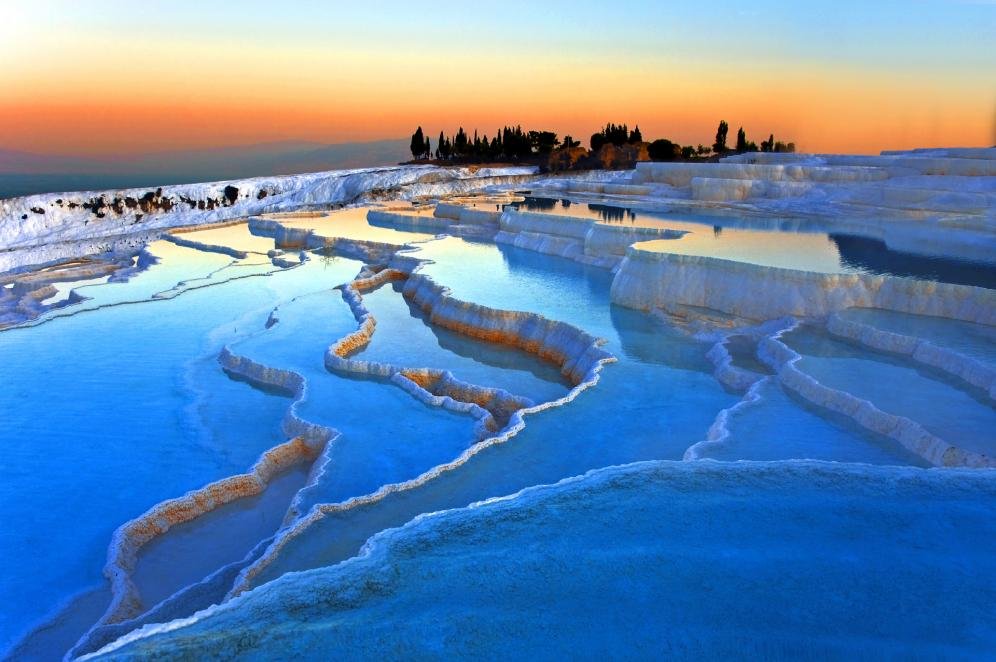



Pamukkale, which in Turkish means "cotton castle", is a natural site in south-western Turkey, in the province of Denizli, close to the town of the same name. The ancient city of Hierapolis was built on top of the white castle which covers an area of ​​2700 meters long and 160 meters high. It can be seen from a great distance, even when you are on the opposite side of the valley, about 20 km from the city of Denizli. Pamukkale is located in the inland Aegean region, in the Meandro river valley, which creates a temperate climate for most of the year.

Tectonic movements not only caused frequent earthquakes, but also allowed the birth of numerous thermal springs. The water that gushes out of it is supersaturated with calcium ions and carbon dioxide, which forms with the water carbonic acid. Emerging, the water loses a large part of the carbon dioxide, shifting the chemical balance from bicarbonate to calcium carbonate which, also due to the lowering of the temperature, precipitates giving rise to the characteristic formations, consisting of thick white layers of limestone and travertine along the slope of the mountain, making the area similar to a cotton fortress or ice falls.

Pamukkale is an important Turkish center for tourists traveling from the coast of Antalya and the Aegean Sea to see this place which, paired with Hierapolis, is one of the UNESCO World Heritage Sites. There are few places in the world similar to this, for example the Mammoth Hot Springs in the USA, the spas of Saturnia in Italy, and Huanglong in the Chinese province of Sichuan (another UNESCO site).
Pamukkale
Address: Denizli 20190
Phone:
Site:
Location inserted by
Culturalword Abco